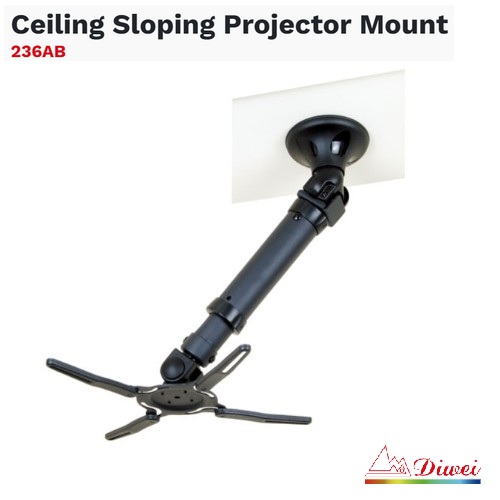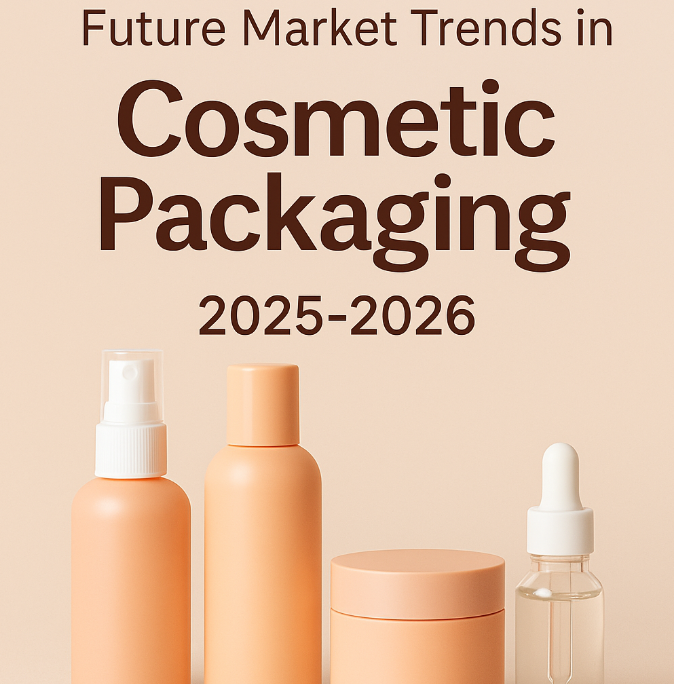Recycled nylon has emerged as a promising alternative to virgin nylon, primarily due to its potential to mitigate environmental impacts associated with traditional nylon production. This introduction delves into the sustainability aspects of recycled nylon, examining its environmental benefits, challenges, and overall viability as a sustainable material.
Recycled nylon is primarily produced from pre-consumer waste, such as discards from weaving mills, and post-consumer waste, including old fishing nets, plastic bottles, and worn-out carpets. This process significantly reduces the dependency on fossil fuels, which are heavily utilized in the production of virgin nylon. According to YnFx, the recycling process consumes 50% less energy and emits 50% less carbon dioxide compared to the production of virgin nylon, highlighting its potential to lower greenhouse gas emissions.
Despite these advantages, recycled nylon is not without its drawbacks. The production process involves chemicals like sulphuric acid and sodium hydroxide, which pose environmental risks if not managed properly. Additionally, recycled nylon is not biodegradable, meaning it can eventually contribute to environmental pollution similar to its virgin counterpart. Furthermore, the cost of recycling nylon is higher than producing virgin nylon, which can limit its widespread adoption in the market.
The market share of recycled nylon remains relatively low, accounting for only 1.9% of all nylon fiber production as of 2020, as noted by PERFORMANCE DAYS. However, several brands are making commitments to increase the use of recycled nylon, which could drive growth in its market share in the coming years.
In conclusion, while recycled nylon presents a more sustainable option compared to virgin nylon, its sustainability is contingent upon addressing the environmental challenges associated with its production and increasing its availability. As the industry continues to innovate and improve recycling technologies, recycled nylon could play a crucial role in the transition towards more sustainable textile practices.
Environmental Benefits of Recycled Nylon
Energy and Resource Efficiency
Recycled nylon production significantly reduces the consumption of energy and natural resources compared to virgin nylon production. Traditional nylon manufacturing relies heavily on non-renewable petroleum-based resources, which are energy-intensive to extract and process. In contrast, recycled nylon utilizes existing materials such as discarded fishing nets and fabric waste, thereby conserving these resources. According to Deekon Textile, the production of recycled nylon requires less energy and water, contributing to a reduction in greenhouse gas emissions by up to 80% compared to virgin nylon.
Carbon Footprint Reduction
The carbon footprint of recycled nylon is considerably lower than that of virgin nylon. The process of recycling nylon involves less energy consumption and fewer emissions of greenhouse gases. For instance, Polylion notes that producing recycled nylon can reduce carbon emissions by up to 40% compared to virgin nylon production. This reduction is crucial in the fight against climate change, as it helps decrease the overall carbon emissions of the textile industry.
Waste Management and Pollution Mitigation
Recycled nylon plays a vital role in waste management by diverting significant amounts of waste from landfills and oceans. By repurposing discarded materials like fishing nets and fabric scraps, recycled nylon production helps reduce plastic pollution in marine environments. Impactful Ninja highlights that recycling plastic waste into nylon fabrics reduces the amount of long-lasting, potentially hazardous plastic in landfills, thereby preventing environmental degradation and safeguarding marine ecosystems.
Circular Economy Promotion
The use of recycled nylon supports a circular economy, where materials are continuously repurposed and reused. This approach reduces the dependency on virgin materials and promotes sustainability within the textile industry. According to Gentle Packing, recycled nylon helps conserve natural resources like oil, water, and energy, while also supporting a circular economy by reducing the need for new raw materials and minimizing waste.
Performance Characteristics Retention
Recycled nylon retains the desirable qualities of virgin nylon, such as durability, elasticity, and resistance to abrasion and chemicals. This makes it an ideal choice for a wide range of applications, from activewear and swimwear to outdoor gear and fashion apparel. Deekon Textile emphasizes that recycled nylon fabrics are known for their strength and longevity, making them suitable for high-performance clothing that endures rigorous use. This retention of performance characteristics ensures that recycled nylon can effectively replace virgin nylon in various applications without compromising quality.
Microplastics and Environmental Concerns
While recycled nylon offers numerous environmental benefits, it is not without its challenges. One significant concern is the release of microplastics during the laundering process. As highlighted by YnFx, garments made from recycled nylon may release microplastics into the water, which can end up in oceans and harm aquatic life. To mitigate this issue, special wash care instructions, such as using a Guppyfriend bag, are recommended to prevent the release of microplastics during washing.
Economic and Social Impact
The production of recycled nylon not only benefits the environment but also has positive economic and social impacts. By supporting recycling initiatives, companies can create jobs and contribute to local economies. Additionally, the use of recycled materials can enhance a brand’s reputation as environmentally responsible, attracting eco-conscious consumers. Recycling Today notes that companies like ECONYL® are leading the way in demonstrating that recycled nylon can match the quality of virgin material while reducing waste, thereby supporting a more sustainable future.
Challenges and Future Prospects
Despite its benefits, recycled nylon faces challenges, particularly in the recycling process itself. Chemical recycling, for example, can produce hazardous by-products and is energy-intensive, as noted by Impactful Ninja. However, advancements in technology and recycling methods are expected to improve the efficiency and sustainability of recycled nylon production. As recycling technology advances, the potential for recycled nylon to further reduce environmental impact and support sustainable development will likely increase.
In summary, recycled nylon offers significant environmental benefits, including reduced energy and resource consumption, lower carbon emissions, and improved waste management. By supporting a circular economy and retaining performance characteristics, recycled nylon presents a sustainable alternative to virgin nylon. However, addressing challenges such as microplastic pollution and improving recycling processes will be crucial for maximizing the environmental benefits of recycled nylon in the future.
Challenges and Drawbacks of Recycled Nylon
Economic Viability and Cost Implications
Recycled nylon, despite its environmental benefits, faces significant economic challenges. The cost of recycling processes, particularly chemical recycling, is notably high. This is due to the energy-intensive nature of depolymerization, which involves breaking down nylon into its monomers. The high operational costs make recycled nylon less competitive compared to virgin nylon, which benefits from fossil fuel subsidies. Consequently, manufacturers are often deterred from incorporating recycled nylon into their products due to these cost disparities. This economic barrier is a critical challenge that needs addressing to enhance the adoption of recycled nylon in the textile industry.
Technological Limitations and Scalability
The technologies used in recycling nylon are still in their nascent stages and have not yet achieved mass-market viability. For instance, enzyme-based bio-recycling, which holds promise for reducing energy costs, is not yet commercially viable. Current recycling technologies struggle with contaminated or mixed-material inputs, which are common in real-world waste flows. This inefficiency hinders the scalability of nylon recycling operations, limiting their ability to meet global demand. The development of more efficient and scalable recycling technologies is essential for overcoming these limitations and promoting the widespread use of recycled nylon.
Infrastructure and Recycling Facilities
The infrastructure for nylon recycling is fragmented and insufficient to meet global demand. Unlike well-established recycling systems for materials like aluminum or glass, nylon recycling is patchy and lacks the necessary facilities. Most municipal recycling centers are not equipped to process nylon, focusing instead on more common plastics such as PET bottles. This lack of infrastructure poses a significant barrier to the effective recycling of nylon, necessitating investments in recycling facilities and systems to support the growth of this sector.
Environmental Concerns in Recycling Processes
While recycled nylon is generally more sustainable than its virgin counterpart, the recycling process itself can pose environmental concerns. The use of chemicals such as sulfuric acid and sodium hydroxide in the production of recycled nylon can be harmful to the environment. These chemicals are toxic to aquatic life and can cause environmental damage if not managed properly. Additionally, recycled nylon is not biodegradable, meaning it will eventually contribute to environmental pollution similar to its source materials. Addressing these environmental concerns is crucial for enhancing the sustainability of recycled nylon.
Market Challenges and Consumer Awareness
The market for recycled nylon faces challenges related to consumer awareness and demand. Many consumers are unaware of the benefits and availability of recycled nylon products, leading to low demand and limited market growth. Furthermore, the price difference between virgin and recycled nylon, driven by the high costs of recycling technologies, deters manufacturers from adopting recycled nylon. To overcome these market challenges, broader education initiatives and incentives for manufacturers to use recycled materials are necessary. Enhancing consumer awareness and demand for recycled nylon products can drive market growth and support the transition to a more sustainable textile industry.
Innovations and Future Prospects
Despite the challenges, there are promising innovations in nylon recycling that could address many of the current drawbacks. Advanced chemical recycling techniques, such as microwave-powered recycling and solvent-based depolymerization, are becoming more cost-effective and environmentally friendly. Additionally, research into enzymatic and bio-recycling methods offers the potential to drastically reduce the energy costs of recycling. Automated sorting technologies are also being developed to improve the efficiency of recycling operations. These innovations, coupled with industry cooperation and supportive legislation, could transform nylon recycling into a sustainable system with a bright future.
Policy and Regulatory Support
To address the challenges facing recycled nylon, policy and regulatory support are crucial. Governments can play a significant role in promoting the use of recycled materials by providing subsidies to recyclers and implementing regulations that encourage the adoption of sustainable practices in the textile industry. Policies that support the development of recycling infrastructure and technologies can help overcome the current limitations and enhance the viability of recycled nylon. By fostering a supportive regulatory environment, policymakers can drive the transition to a more sustainable and circular economy.
In summary, while recycled nylon presents a sustainable alternative to virgin nylon, it faces several challenges that must be addressed to maximize its environmental benefits. Economic viability, technological limitations, infrastructure, environmental concerns, and market challenges are key areas that require attention. However, with ongoing innovations and supportive policies, the potential for recycled nylon to contribute to a sustainable future remains promising.
Comparison with Virgin Nylon
Energy Consumption and Emissions
Recycled nylon offers significant advantages over virgin nylon in terms of energy consumption and emissions. The production of recycled nylon consumes up to 50% less energy compared to virgin nylon. This reduction in energy use is crucial for decreasing the overall environmental footprint of nylon production. Additionally, recycled nylon emits approximately 57% fewer greenhouse gases than its virgin counterpart, contributing to a substantial decrease in the industry’s carbon footprint.
Resource Utilization and Conservation
The production of virgin nylon relies heavily on non-renewable resources, particularly petroleum-based raw materials. In contrast, recycled nylon utilizes existing materials such as discarded fishing nets and fabric waste, significantly reducing the demand for new raw materials. This shift not only conserves natural resources but also supports the principles of a circular economy by repurposing waste materials into valuable products.
Cost Implications
While recycled nylon offers environmental benefits, it often comes with higher production costs compared to virgin nylon. The recycling process can be more expensive due to the complexities involved in collecting, sorting, and processing waste materials into high-quality nylon fibers. Despite these higher costs, the long-term environmental savings and potential for reducing waste make recycled nylon an attractive option for eco-conscious businesses and consumers.
Environmental Impact and Waste Reduction
Recycled nylon significantly reduces the environmental impact associated with nylon production. By diverting waste from oceans and landfills, it helps mitigate pollution and decrease the accumulation of plastic waste in the environment. Moreover, the recycling process minimizes the release of toxic emissions and reduces the disposal of petroleum-based chemicals, further enhancing its environmental credentials.
Performance and Durability
Recycled nylon retains many of the desirable properties of virgin nylon, such as durability, elasticity, and resistance to abrasion and chemicals. This makes it suitable for a wide range of applications, including activewear, swimwear, and outdoor gear. While the existing content discusses the retention of performance characteristics, this section emphasizes the specific applications and the ability of recycled nylon to effectively replace virgin nylon without compromising quality.
Microplastic Concerns
A notable drawback of recycled nylon, similar to virgin nylon, is the potential release of microplastics during laundering. These microplastics can enter water systems and contribute to ocean pollution, posing a threat to aquatic life. To mitigate this issue, garments made from recycled nylon often come with special wash care instructions, such as using a Guppyfriend bag to capture microplastics during washing.
Biodegradability and Long-term Environmental Impact
Despite its environmental benefits, recycled nylon shares a significant drawback with virgin nylon: it is not biodegradable. As a synthetic material, recycled nylon can persist in the environment for years, contributing to long-term environmental harm if not properly managed. This underscores the importance of continued innovation in recycling technologies and waste management practices to minimize the environmental impact of nylon products.
Technological Advancements and Future Prospects
The future of recycled nylon is promising, with ongoing advancements in recycling technologies that aim to further reduce environmental impacts and enhance the economic viability of recycled nylon production. These innovations not only lessen the environmental footprint but also open up new market opportunities, making the industry more sustainable and economically viable. As these technologies continue to evolve, the potential for recycled nylon to replace virgin nylon in a broader range of applications will likely increase.
In conclusion, while recycled nylon presents several advantages over virgin nylon in terms of environmental impact, resource conservation, and performance retention, challenges such as higher production costs and microplastic pollution remain. Continued efforts in technological innovation and sustainable practices are essential to fully realize the potential of recycled nylon as a sustainable alternative to virgin nylon.
Conclusion
Recycled nylon emerges as a sustainable alternative to virgin nylon, offering significant environmental benefits, including reduced energy consumption, lower greenhouse gas emissions, and effective waste management. By utilizing discarded materials such as fishing nets and fabric waste, recycled nylon production conserves natural resources and supports a circular economy, as highlighted by Gentle Packing. Despite these advantages, recycled nylon faces challenges, including higher production costs due to complex recycling processes and potential microplastic pollution during laundering, as noted by YnFx.
The implications of these findings suggest that while recycled nylon is a promising step towards sustainability, addressing economic and technological barriers is crucial for its widespread adoption. Innovations in recycling technologies, such as enzyme-based bio-recycling and advanced chemical recycling, are essential to enhance the economic viability and environmental performance of recycled nylon, as discussed by Fabric Material Guide. Additionally, policy support and consumer education are vital to increase market demand and promote the use of recycled nylon. By fostering a supportive regulatory environment and investing in recycling infrastructure, stakeholders can drive the transition towards a more sustainable and circular textile industry.








